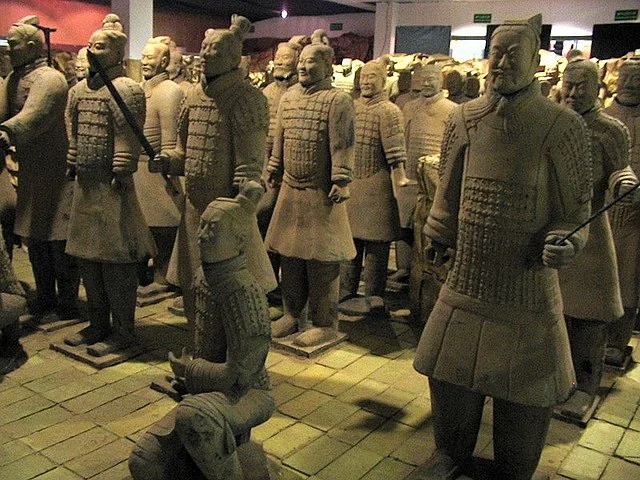The Chinese shānwénkǎi, a type of armor from the Song Dynasty, represents a significant historical artifact that reflects the military technology and craftsmanship of ancient China. This armor was designed to protect warriors during the tumultuous times of the Song Dynasty, which lasted from 960 to 1279 AD. The shānwénkǎi armor is notable for its intricate design and the materials used in its construction, which often included iron or steel plates, leather, and textiles. The preservation of such artifacts offers invaluable insights into the warfare, culture, and societal structures of the period.
Get your dose of History via Email
The Discovery of the Chinese shānwénkǎi Song Dynasty Armor
The discovery of the Chinese shānwénkǎi Song Dynasty armor was a significant event in the field of archaeology. It shed light on the military practices and innovations of the Song Dynasty. The exact details of the discovery, including the date, location, and discoverer, are not widely documented in public sources. However, such artifacts typically emerge during archaeological excavations at ancient battle sites or in tombs of notable figures from the era. These discoveries often occur unexpectedly and can lead to a surge in scholarly research and public interest in the period.
When the armor was unearthed, it provided historians and archaeologists with tangible evidence of the Song Dynasty’s military capabilities. The armor’s condition upon discovery would have offered clues about the methods used to create and maintain it. Moreover, the context of the find, whether found among other artifacts or in isolation, would have influenced the understanding of its significance and use.
Researchers who study these artifacts use a variety of methods to date and authenticate them. Carbon dating, metallurgical analysis, and comparison with other known artifacts from the period are common techniques. These methods help to confirm the armor’s origin and place it within the broader historical narrative of the Song Dynasty.
The discovery of the shānwénkǎi armor would have likely been published in academic journals and shared within the archaeological community. Such findings are critical for museums, where they can be preserved, studied, and displayed. They also contribute to the collective knowledge of China’s military history and technological advancements.
Ultimately, the discovery of the Chinese shānwénkǎi Song Dynasty armor not only adds to the historical record but also captivates the imagination. It serves as a bridge to the past, allowing modern observers to connect with the warriors who once wore such armor on the battlefields of ancient China.
About the Chinese shānwénkǎi Song Dynasty Armor
The Chinese shānwénkǎi Song Dynasty armor is a fascinating artifact that offers a glimpse into the martial culture of ancient China. The term “shānwénkǎi” refers to a specific style of armor that was prevalent during the Song Dynasty. This period was marked by significant military conflicts and the need for effective protective gear was paramount.
The armor was designed to provide a balance between protection and mobility. It consisted of various components that covered the body, including the torso, arms, and legs. The design allowed for flexibility, which was essential for soldiers who needed to move quickly and efficiently on the battlefield.
Artisans crafted the shānwénkǎi armor using materials that were available and valued at the time. Iron or steel plates were commonly used, providing sturdy protection against weapons. These metal plates were often interwoven with leather straps or attached to fabric backings to create a layered defense.
The aesthetic aspect of the armor was also important. Craftsmen would sometimes embellish the armor with intricate designs, symbols, or calligraphy. These decorations not only served to identify the wearer but also reflected the cultural and artistic sensibilities of the Song Dynasty.
Preserved examples of the shānwénkǎi armor are rare, making each discovery a significant addition to the understanding of Chinese military history. The armor stands as a testament to the ingenuity and skill of ancient Chinese armorers, whose work protected warriors and shaped the outcomes of battles.
Key Facts and Figures of the Chinese shānwénkǎi Song Dynasty Armor
The Chinese shānwénkǎi Song Dynasty armor is characterized by several key facts and figures that highlight its historical and cultural significance. The materials used in the armor’s construction were chosen for their durability and protective qualities. Iron and steel were the primary metals, providing a strong defense against bladed weapons.
The armor’s construction involved intricate techniques to ensure that the metal plates did not impede the soldier’s mobility. Artisans skillfully connected the plates with leather straps or textile linings, allowing for a range of movement. This design was crucial for the effectiveness of the armor in combat situations.
The size and weight of the armor varied depending on the wearer and the specific requirements of their role in battle. However, the overall design aimed to cover as much of the body as possible without being overly cumbersome. The balance between protection and agility was a key consideration in the armor’s design.
Details such as the number of plates, the thickness of the materials, and the method of fastening the armor would have been tailored to the individual warrior. These variations reflect the personalized nature of the armor and the resources available to the armorers of the time.
Preserved examples of the shānwénkǎi armor provide valuable information about the craftsmanship and technological capabilities of the Song Dynasty. Each artifact serves as a piece of a larger puzzle, contributing to the understanding of ancient Chinese warfare and society.
At a glance
- Country Discovered: China
- Civilization: Song Dynasty
- Age: 960-1279 AD
Source:

